Did you know? Nearly 30% of new puppy owners say they underestimated the prep required before their puppy came home—leading to stress and overlooked essentials. If you're about to welcome a furry friend, you'll want to avoid being caught off guard! A well-structured new puppy checklist isn't just about shopping for adorable puppy supplies—it's your blueprint for a smoother transition, a happy puppy, and stress-free first days. Ready to set the stage for a loving, lifelong bond? Let's dive in!

Did you know? Nearly 30% of new puppy owners say they underestimated the prep required before their puppy came home—leading to stress and overlooked essentials.
What a New Puppy Checklist Covers: Setting the Stage for Success
Bringing a new puppy home is an exciting milestone, but it also comes with responsibilities that can catch new pet parents by surprise. A thorough new puppy checklist is essential for both first-timers and experienced dog owners, as it ensures all puppy essentials—like puppy food , a dog bed , and chew toys —are ready before arrival. By preparing your puppy home in advance, you minimize stress and create a safe, welcoming space for your newest family member.
This comprehensive checklist covers not only what to buy but how to use each item, guiding you through safety measures such as puppy-proofing the house, selecting the right id tag , and incorporating puppy pads and poop bags for effective housetraining. With clear routines, proper identification, and structured daily activities, you give your pup the best start possible. Let’s explore the details and get practical about prepping your household.
What You'll Learn from This New Puppy Checklist Guide
- The indispensable items every puppy checklist should include
- Expert tips for preparing your puppy home
- Puppy food and nutritional essentials
- How to make your puppy’s first days stress-free and safe
- Training basics and the benefits of establishing routines early
- All about emergency items, ID tags, health, and comfort
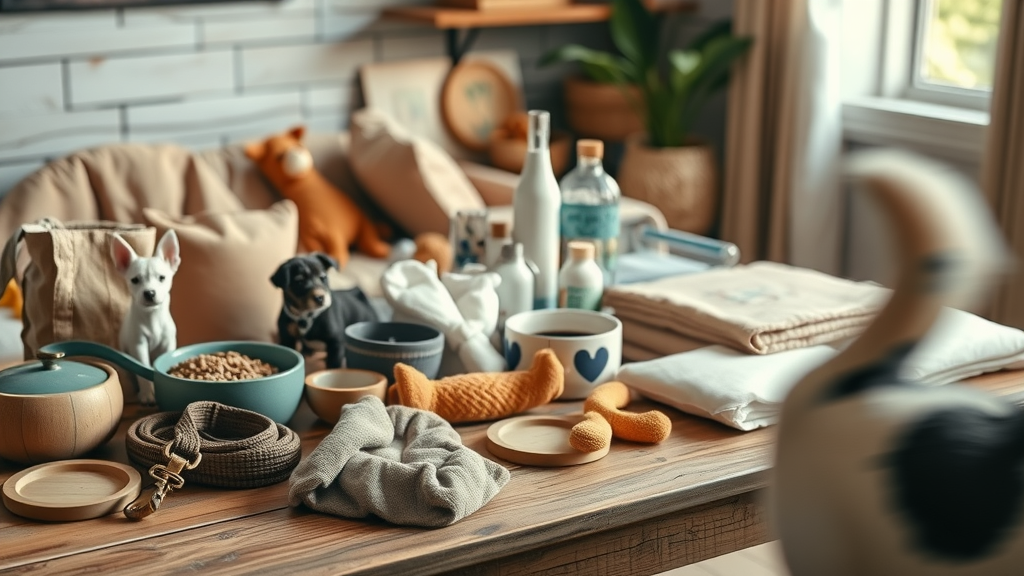
New Puppy Checklist: Puppy Essentials and Must-Haves
Building your new puppy checklist starts with gathering the must-haves for your new furry friend. Puppy essentials like a sturdy dog bowl and non-slip dog bed create reliable routines for feeding and napping. Safe chew toys provide vital enrichment and help with teething—just be sure to rotate them for continued interest. Puppy pads are a good option for early accidents, while an identifiable id tag ensures your pet’s safety should they wander.
Add a collar and leash that suits your puppy’s size and personality, and always stock up on poop bags to make walks eco-friendly and hassle-free. Don’t forget grooming tools —brushes, nail clippers , and dental care items keep your puppy looking and feeling their best. Organize all health documents in a vet records folder, and be ready for crate training with a properly sized crate. Each of these items forms the bedrock of a stress-free start for both pet parents and puppies.
- Puppy food and water bowls : Non-slip, easy-clean designs
- Dog bed : Comfort, size, and placement tips
- Chew toy and chew toys : Safe, engaging, and age-appropriate options
- Puppy pads : For accidents and housetraining
- ID tag and id tags : Legally required and personalized for safety
- Collar and leash : Size, comfort, and adjustability
- Poop bag and poop bags : Choose eco-friendly, durable options
- Puppy crate : Size selection and crate training basics
- Grooming tools : Brushes, nail clippers, dental care items
- Vet records organizer : Keeping health schedules up-to-date
| Essential Puppy Item | Purpose | Pro Tip |
|---|---|---|
| Puppy Food | Nutrition | Choose breed/age-specific formulas |
| Dog Bed | Comfort | Washable covers are a must |
| Chew Toy | Teething/Entertainment | Rotate toys for engagement |
| ID Tag | Identification | Include your phone number |
| Poop Bags | Cleanliness | Carry extras on walks |
Creating a Safe Puppy Home: Checklist for a Welcoming Environment
Before your puppy sets paw in your home, it's vital to survey and puppy-proof every room. Cords, small items, household plants, and cleaning products can pose hazards to a curious pup. Use gates to create a designated puppy home base with a comfortable dog bed , crate, and puppy pads nearby. Placing essentials in a quiet, cozy corner encourages good habits and makes the transition less overwhelming for your new arrival.
Managing daily life as a puppy owner means adapting your routines to ensure safety and minimize temptation for chewing or accidents. Designate a central location to keep your puppy checklist items organized, and consistently return toys, leashes, and grooming tools after use. This not only keeps your space tidy but reinforces predictability for your puppy—a cornerstone of successful training and bonding. Remember, investing a little time in puppy-proofing now will spare headaches later and promote a safe, loving environment for your growing companion.
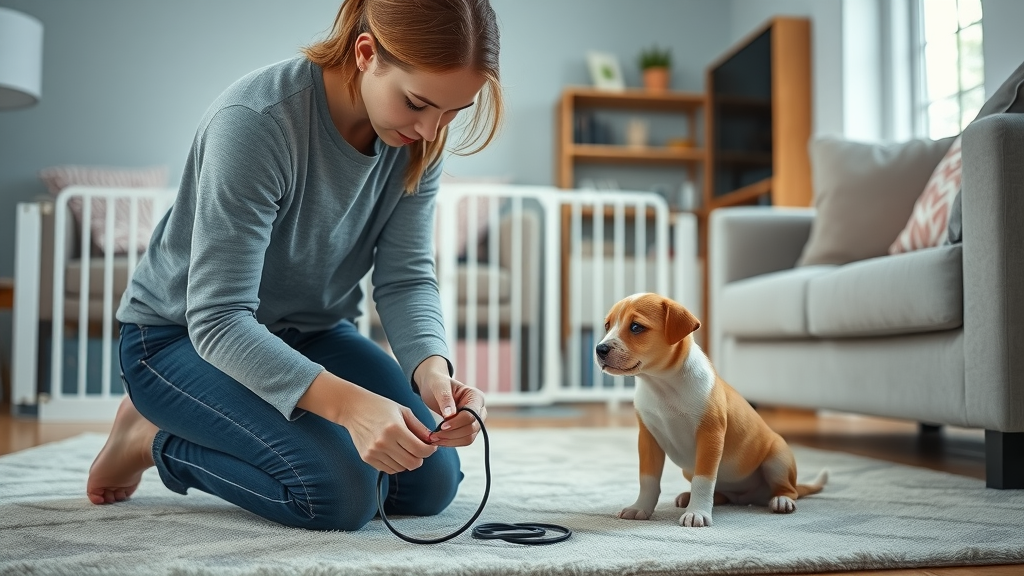
Feeding Your Puppy: Selecting the Right Puppy Food
Nutrition is the foundation of your puppy’s lifelong health and happiness. Select puppy food tailored to your breed’s size and age, and consult your vet for recommendations on both kibble and wet food. Your puppy checklist should include dog bowls that are durable and non-slip to handle eager eaters, ensuring mealtime is safe as well as enjoyable. If you’re transitioning from breeder or shelter food, mix the new puppy food with the old gradually to avoid upsetting sensitive stomachs.
Consistency is key: Feed your puppy at set times each day, tracking the amounts to prevent overfeeding or delays. Fresh, clean water should always be accessible; consider a spill-proof dog bowl for busy puppies. Keep food storage containers tightly sealed to preserve freshness, and introduce new treats thoughtfully. Take note—what works for an adult dog may not suit a small puppy, so stick to guidelines on portion size and avoid human foods that could harm your pet.
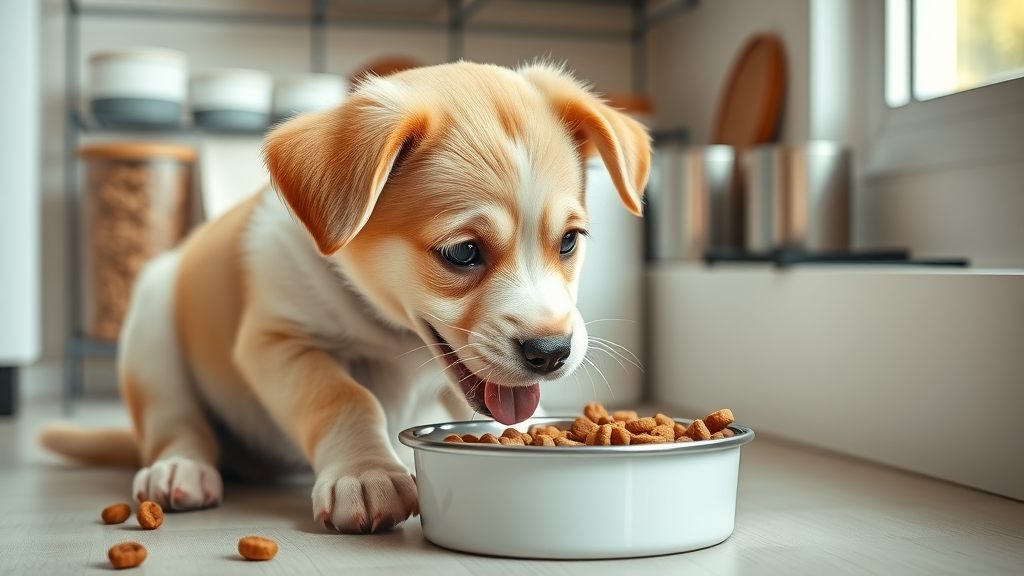
Puppy Health and Hygiene: Poop Bags, Nail Clippers, and Beyond
Cleanliness and preventive care are essential elements of any puppy checklist . Stock up on poop bags and an easy-to-use dispenser for walks—eco-friendly options are a good idea for the environment. Securely tie and dispose of used poop bags in outdoor bins. Don’t overlook grooming: a set of high-quality nail clippers , a brush for your puppy’s coat type, and gentle puppy shampoo will help keep your furry friend feeling comfortable.
Schedule your first vet visit within days of your puppy’s arrival to review vaccinations, microchipping, and wellness milestones. Organize critical documents in a pet records folder, and consider adding pet insurance to your plan—unexpected health issues can arise quickly. Frequent, gentle handling (checking ears, paws, and teeth) not only supports regular grooming but accustoms your puppy to care routines, making future appointments less stressful for both you and your pup.
ID Tag, Collar, and Leash Choices for New Puppy Owners
Your puppy’s id tag isn’t just a formality—it’s a vital part of every new puppy checklist , providing peace of mind in case of accidental escapes. Select a sturdy collar that fits snugly but comfortably, leaving room for two fingers between collar and neck. Adjustable options are especially helpful as your puppy grows. Look for breakaway or quick-release collars for small breeds, and always double-check that contact info on id tags is current.
Choosing the right leash enhances safe outings and training sessions. Leather, nylon, and retractable leashes all have pros and cons, but a four- to six-foot length is usually a good option for young puppies who need guidance. Regularly check id tags for wear or fading, and update your phone number if it changes. With the right setup, you’re prepared for both daily walks and life’s unpredictable moments.
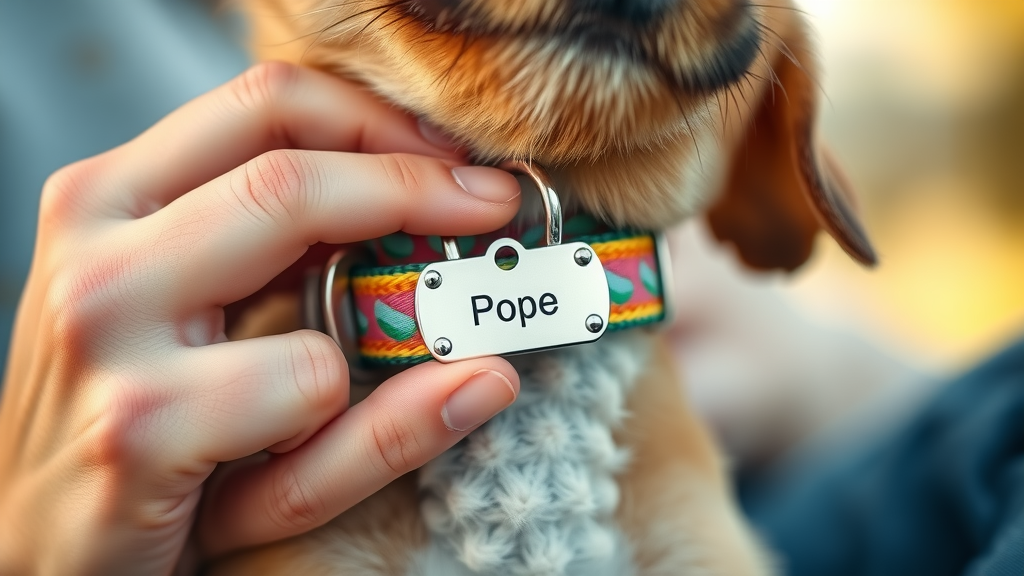
Choosing and Introducing Chew Toys Safely
Chewing is not just fun for puppies—it’s a fundamental behavior aiding teething and stress relief. When building your new puppy checklist , opt for a mix of chew toys : firm rubber for teething, plush for comfort, and textured for gum massage. Switching toys every few days keeps your puppy interested and helps keep destructive behaviors at bay.
Safety is key: Select chew toys free from small or detachable parts and avoid anything too hard to chew, as it could harm puppy teeth. Monitor your furry friend closely during play, especially with new toys, and thoroughly clean toys regularly to minimize germs. Age-appropriate toys also help give your pup a safe outlet for energy, making them less likely to chew on shoes or furniture.
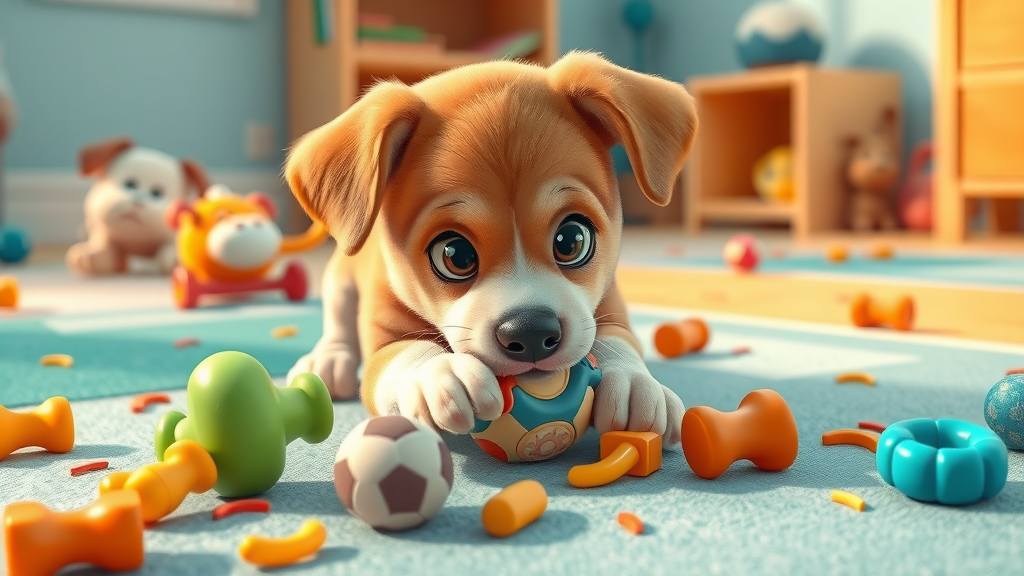
Crates and Beds: Making Your Puppy Feel at Home
A proper dog bed and crate offer your puppy both comfort and security, and no puppy checklist is complete without them. Choose a bed that’s large enough for your puppy to grow into, with washable covers for easy upkeep. Select bedding that is both soft and chew-resistant—items like fleece blankets or a favorite stuffed toy can help soothe your puppy during the first few nights away from littermates.
Your crate should be big enough for your pup to stand, turn, and lie down but snug enough to provide a den-like feel. Place the crate in a quiet area that’s still accessible to the family, reinforcing the idea that the crate is a safe, positive space. Start crate training early, pairing time inside with treats or a favorite chew toy . Consistent use of a designated space for your pup boosts confidence and supports housetraining success.

Puppy Pads and Potty Training Products
Successful potty training starts with preparation and patience. For city living or cold weather, puppy pads are a good idea—choose ones with absorbent cores and leakproof backing to protect your floors. Place puppy pads in a consistent spot, away from food and bedding, and use praise and treats to reward “hits” during training sessions.
Have cleaning supplies on hand for inevitable accidents. Enzymatic cleaners remove scent traces that could trigger repeat indoor accidents. If crate training, help your puppy build bladder control by incorporating routine outdoor breaks and gradually phasing out indoor pads. Staying calm and routine-driven makes the transition to outdoor potty habits smoother for both you and your new companion.
Training Your Puppy: Building Habits from Day One
Establishing consistent routines gives your puppy structure and security. Incorporate short, daily training sessions into your new puppy checklist from the start—using a combination of positive reinforcement , delicious treats, and the occasional chew toy as a reward. Basic commands like sit, stay, and come should be practiced a few times daily.
Every family member should be involved in training your puppy to ensure consistency and to help your puppy learn to trust and bond with each person. Use clear cues, stay patient, and keep sessions upbeat and brief. Remember, kindness and repetition win, especially in the early days.
“A new puppy checklist isn’t about buying things—it’s about building the foundation for a happy, confident companion.” – Canine Behavior Specialist
Finding and Working with a Qualified Dog Trainer
A professional dog trainer can make a world of difference for new puppy owners, smoothing out the transition from basic manners to good canine citizenship. Research trainers who use positive, reward-based techniques and have credible certifications. Many trainers offer group classes for socialization, as well as private sessions to address individual needs.
Ask potential trainers about their approach and experience with your puppy’s breed or temperament. Effective dog trainers help you set achievable goals, align them with your new puppy checklist , and troubleshoot common behavior issues before they become problematic. The right partnership can help both you and your puppy thrive together from the start.
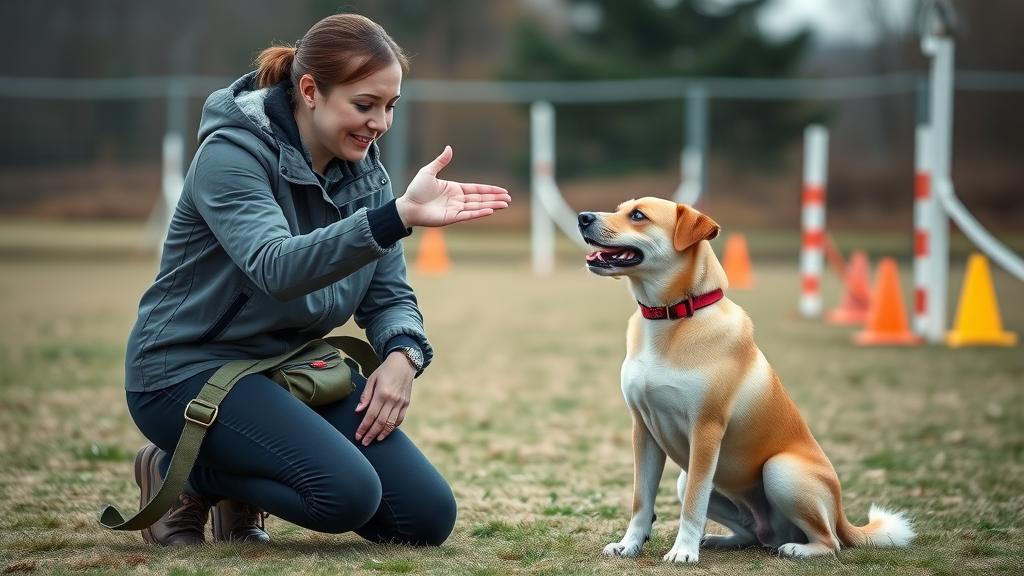
Pet Insurance: Safeguarding Your Puppy’s Future
Including pet insurance in your puppy checklist can save heartbreak and hefty expenses down the line. Explore plans that cover illnesses, injuries, and routine care—some even provide reimbursement for wellness visits and vaccinations. Compare deductibles, coverage limits, and exclusions before making a decision, and review the requirements for pre-existing conditions.
Organize your insurance paperwork in a dedicated folder or app, alongside vet records and microchip info. Quick access is crucial in emergencies, ensuring you can respond swiftly if your puppy needs veterinary care. Protecting your pet with insurance offers peace of mind as your companion explores the world and grows.

Owner Responsibilities and Legal Essentials
As a responsible puppy owner, you must adhere to local regulations regarding licensing, microchipping, and registration . These steps support community safety and can help reunite you with your pup if they ever get lost. Schedule vaccination appointments promptly, keeping all health records current and accessible. Regular vet checkups are an essential aspect of every new puppy checklist .
Consistency matters—set clear rules and boundaries for your puppy from the start. All members of your household should be on the same page as you guide your new furry friend through their adjustment. By staying organized and proactive, you’ll foster a secure and happy home environment for your canine companion.
People Also Ask
Where should a puppy sleep the first night?
The first night is crucial for easing your puppy’s anxiety. Place your puppy’s crate or dog bed in your bedroom or nearby for comfort and reassurance. This close proximity helps prevent loneliness and makes it easier to monitor for potty breaks, establishing trust and setting the stage for future independent sleeping arrangements.
What is the rule of 3 for a new puppy?
The “rule of 3” guides your expectations during your puppy’s adjustment: 3 days to decompress, 3 weeks to learn your routine, and 3 months to start feeling at home. By following this timeline within your new puppy checklist , you allow your puppy to acclimate at their own pace, reducing stress on both sides.
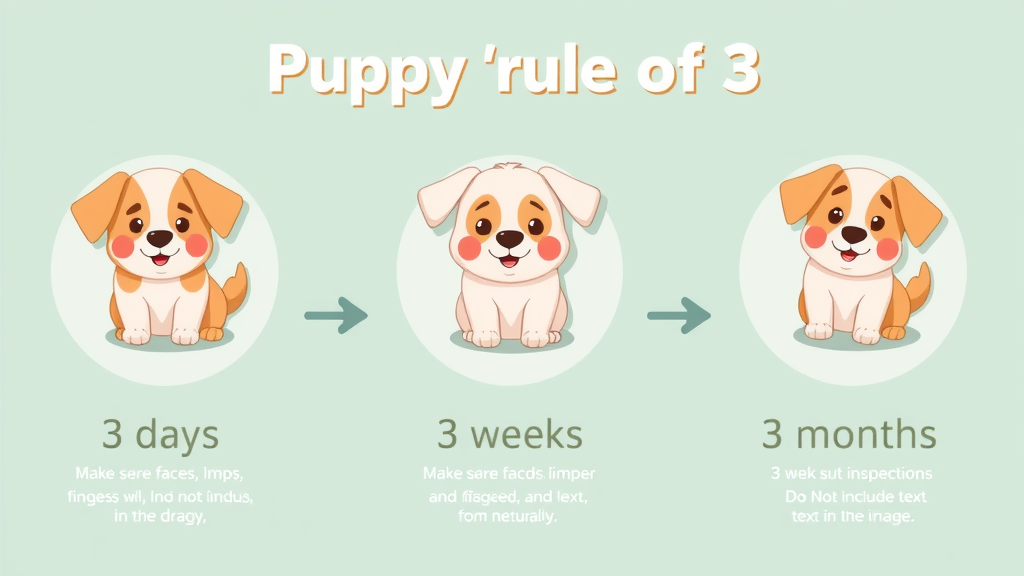
What is the puppy 1/2 rule?
The puppy 1/2 rule is a guideline for potty breaks: take your puppy outside at least once every hour per month of age, plus one more. For example, a 2-month-old puppy should be taken out every three hours. This helps with potty training and reduces accidents while your puppy is still learning bladder control.
How do you survive the first 48 hours with a new puppy?
Preparation is your ally. Stick to your puppy checklist and maintain calm, predictable routines. Limit visitors, supervise closely, and introduce crate or bed time gently. Lots of patience, frequent potty breaks, positive reinforcement, and a stash of comforting chew toys help both you and your puppy adjust more smoothly in those pivotal first days.
Common Questions and Quick Tips for Your Puppy Checklist
- When should I introduce my puppy to other pets? Wait one to two weeks, ensuring your puppy is healthy, vaccinated, and comfortable in their new home first.
- How do I handle teething with chew toys? Offer variety, keep toys clean, and chill rubber toys for added gum relief. Rotate toys to keep interest high.
- Are puppy pads necessary if I'm crate training? Not always, but they can help manage accidents during the early stages. Gradually phase out as crate training succeeds.
- How soon should I visit the vet? Ideally within a week of bringing your puppy home—sooner if you notice unusual symptoms.
- What’s the best way to prevent separation anxiety? Practice short departures, provide safe comfort items, and create a consistent schedule that builds confidence while alone.
Sample Daily Schedule for New Puppy Owners
| Time | Activity | Checklist Item |
|---|---|---|
| 7:00 am | Wake & Potty | Puppy pad, leash, poop bag |
| 8:00 am | Breakfast | Puppy food, water bowl |
| 9:00 am | Training | Chew toy, chew toys, treats |
| Noon | Midday Potty | Poop bag, leash |
| 1:00 pm | Nap | Dog bed |
| 3:00 pm | Play | Chew toys, supervised activity |
| 6:00 pm | Dinner | Puppy food, bowl |
| 8:00 pm | Short Walk | Leash, poop bag, id tag |
| Bedtime | Crate/Bed | Dog bed, comfort item |
Checklist for Puppy Socialization: Setting Up for Success
Early socialization prepares your puppy for a confident, well-adjusted adulthood. Introduce your puppy to safe places—calm parks, puppy classes, and small, friendly gatherings. Keep experiences positive and brief, using treats and chew toys to reinforce calm behavior and encourage exploration.
Track each new interaction, including sights, sounds, people, and other pets. Celebrate milestones, but avoid overwhelming your puppy with too much stimulation at once. Socializing is a key aspect of your new puppy checklist , helping your companion learn to navigate the world with curiosity rather than fear.
Key Takeaways for Your New Puppy Checklist Journey
- Preparation now reduces challenges later
- The right puppy essentials set the foundation for health and happiness
- Training and routine are vital for both puppy and owner
- Safety, identification, and health measures cannot be overlooked
Getting Ready: Your Next Steps for Puppy Essentials and Lifelong Bonding
Your new puppy checklist is only the beginning—commit to routine, safety, and compassionate training to help your puppy thrive. Invest your energy and love now, and you’ll build a lifelong bond with your newest family member.
To further enhance your preparation for your new puppy’s arrival, consider exploring these comprehensive resources:
This guide from the American Kennel Club offers detailed insights into selecting appropriate toys, treats, and supplies, ensuring your puppy’s needs are met from day one.
PetMD provides a thorough checklist covering essential items and health considerations, helping you create a safe and nurturing environment for your new companion.
By consulting these resources, you’ll gain valuable knowledge to ensure a smooth transition for your puppy into their new home.
 Add Row
Add Row  Add
Add 




Write A Comment